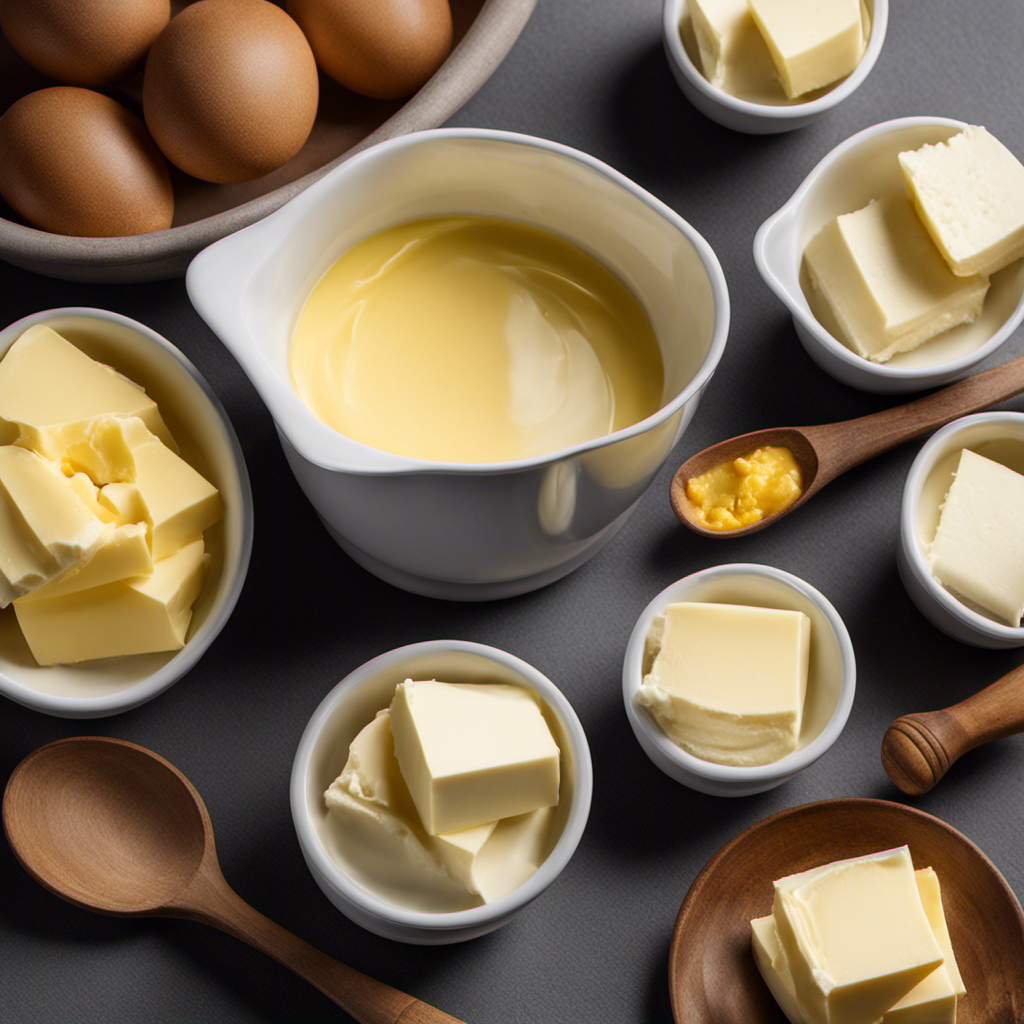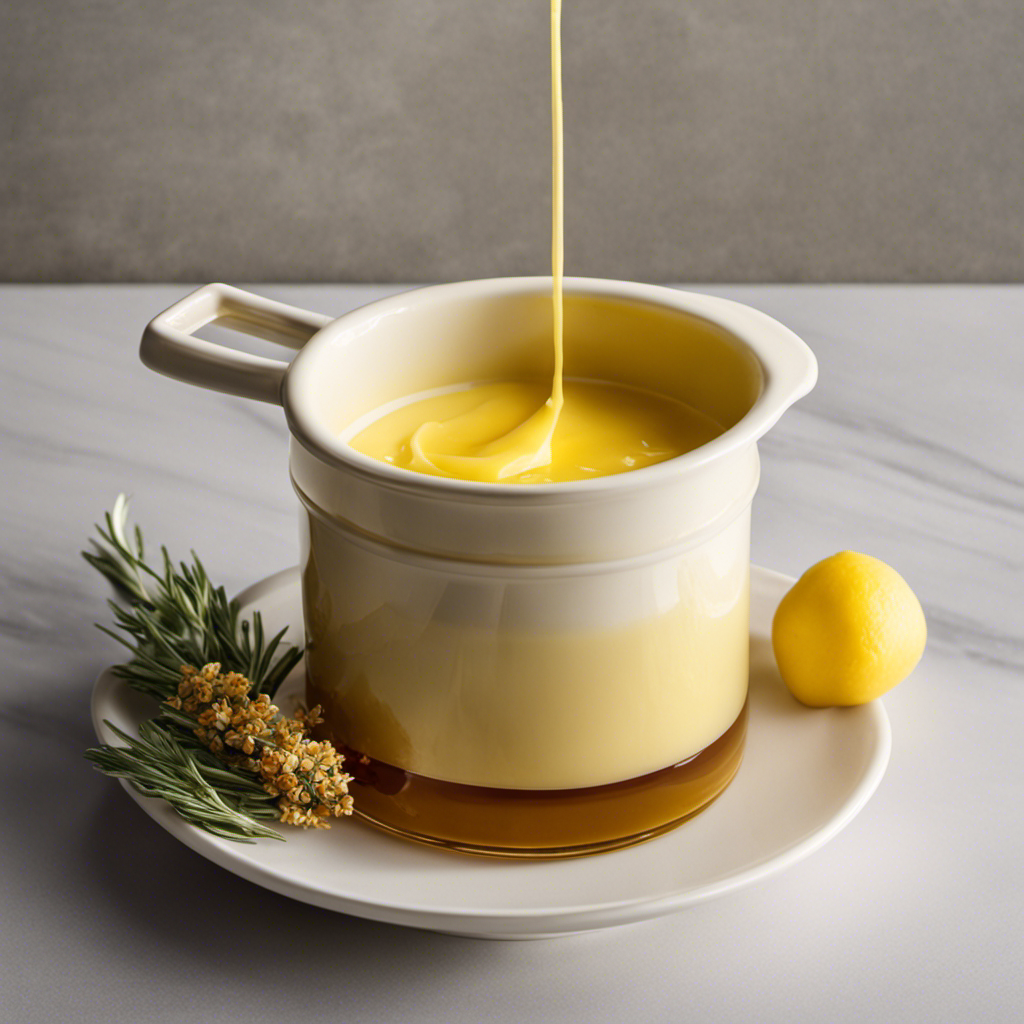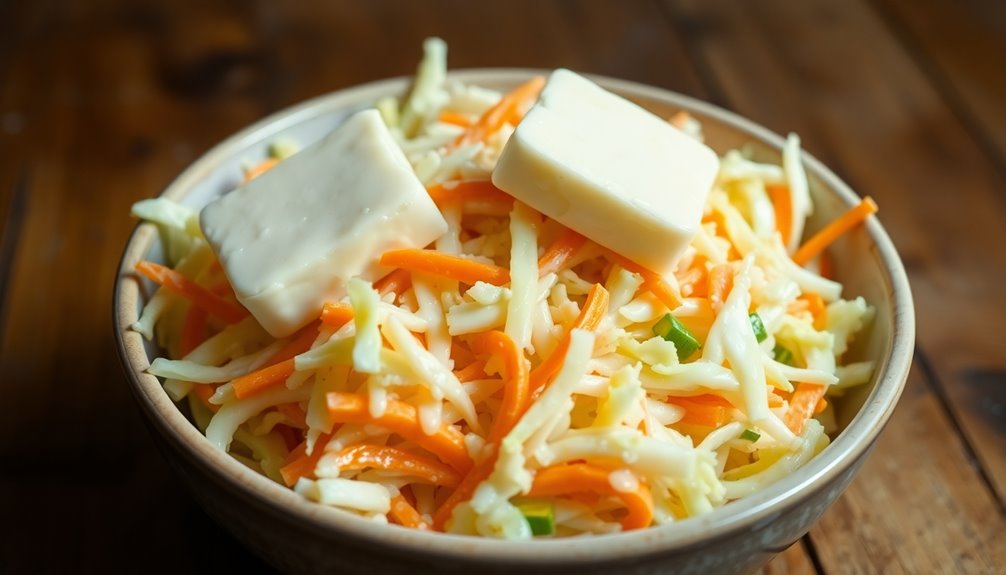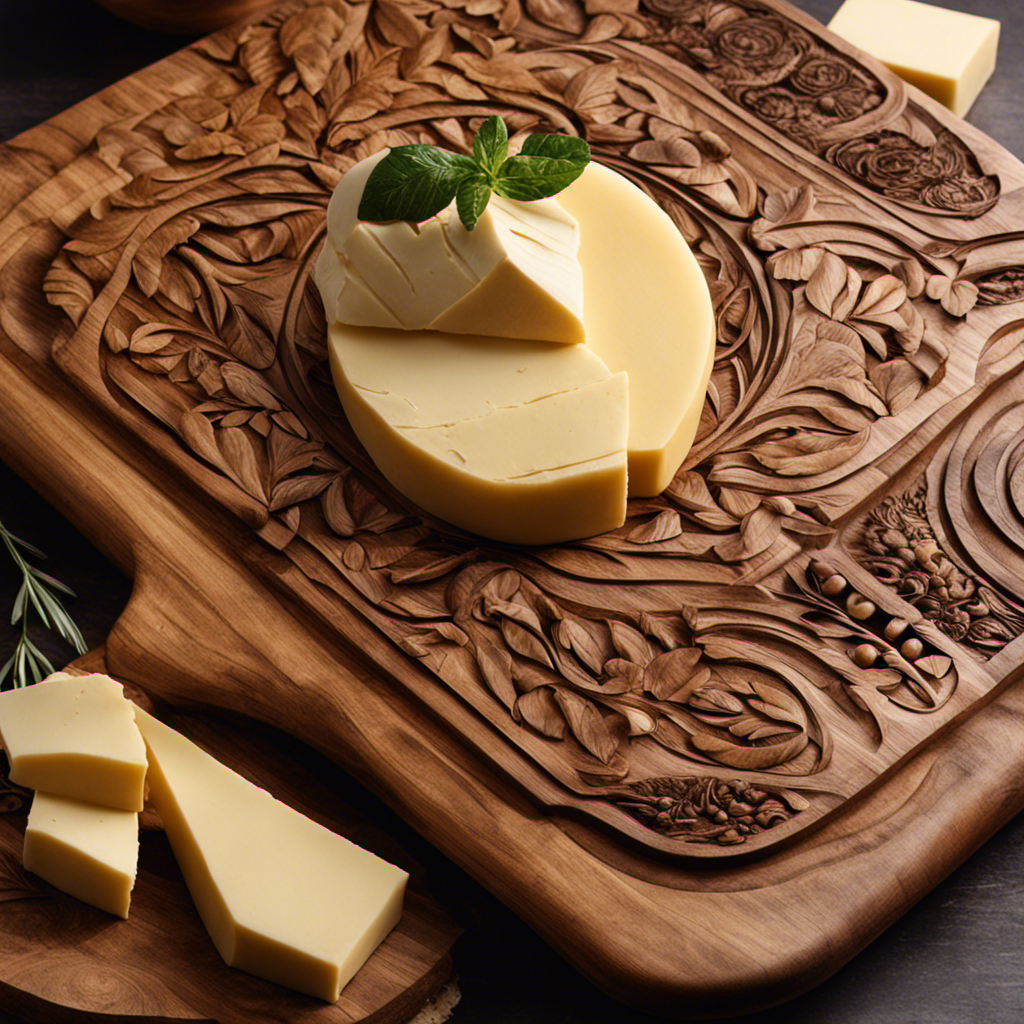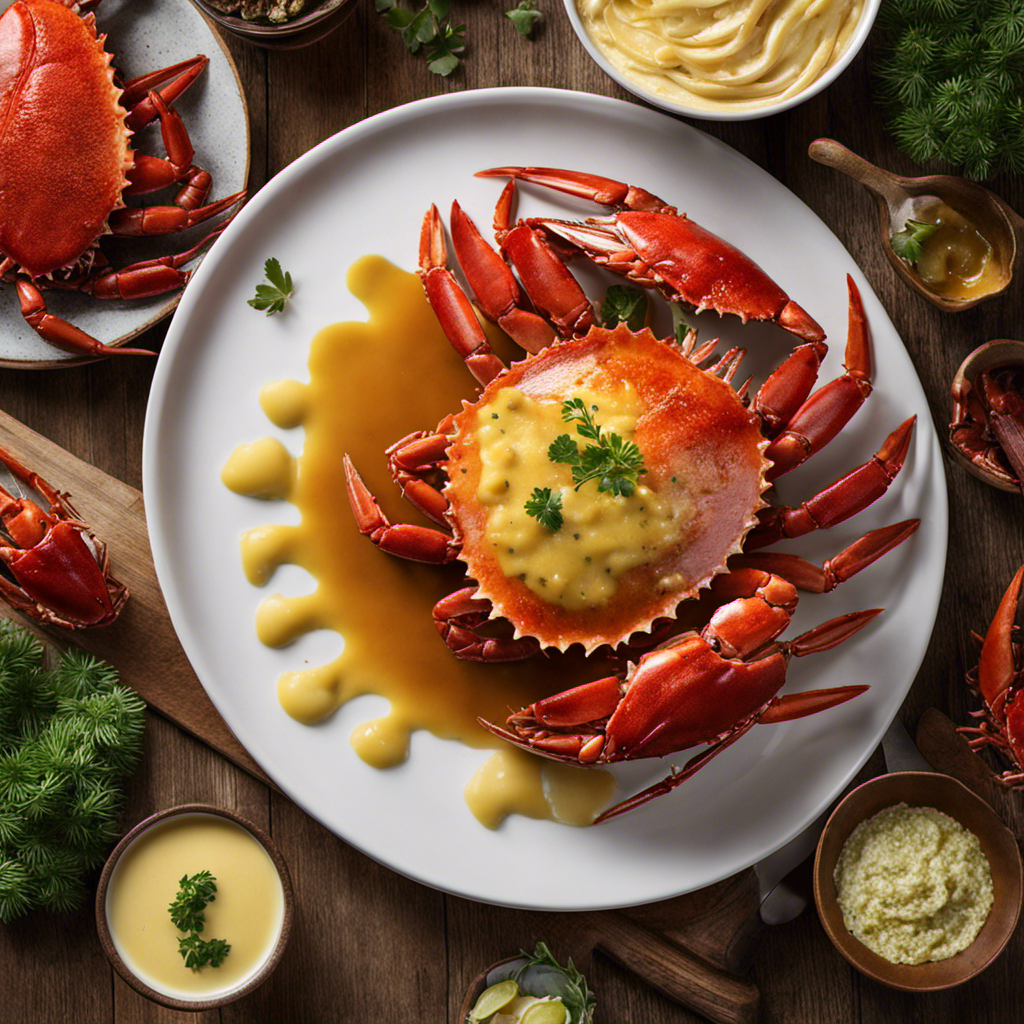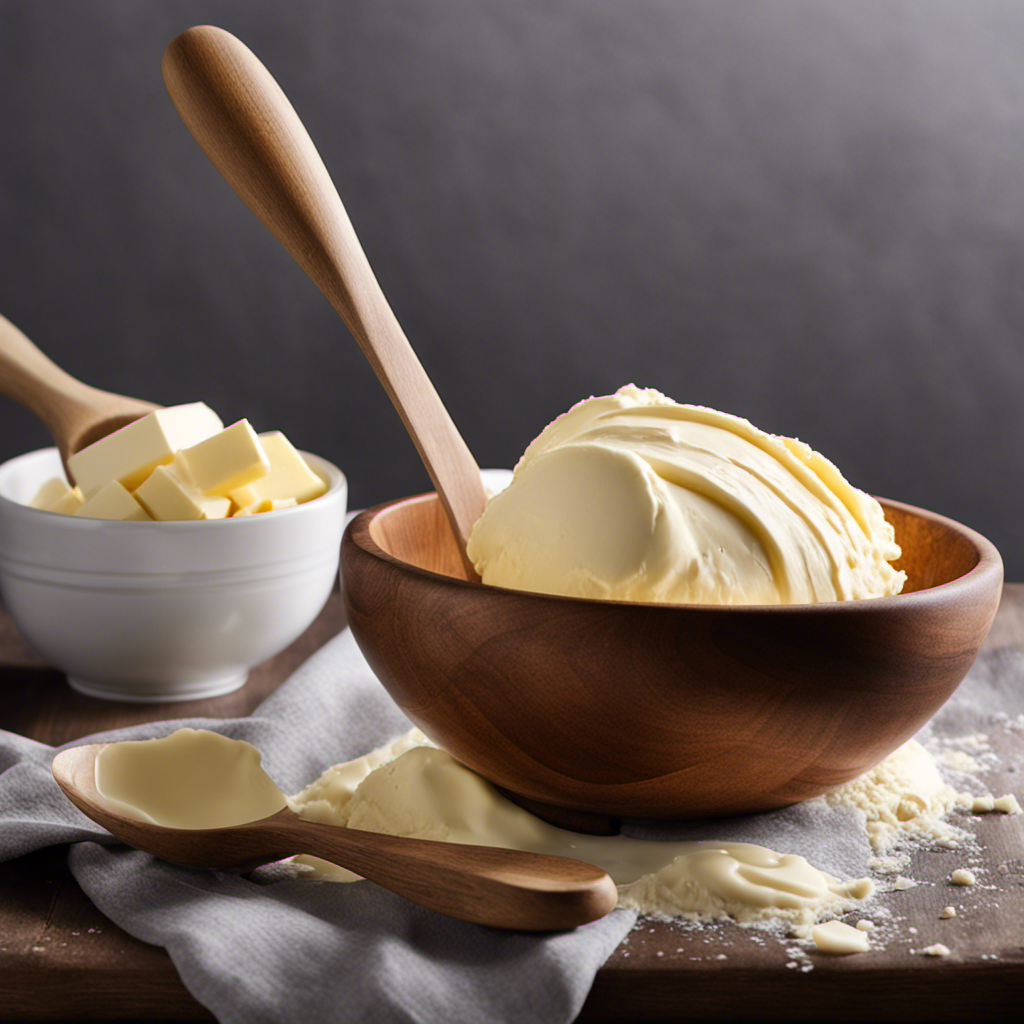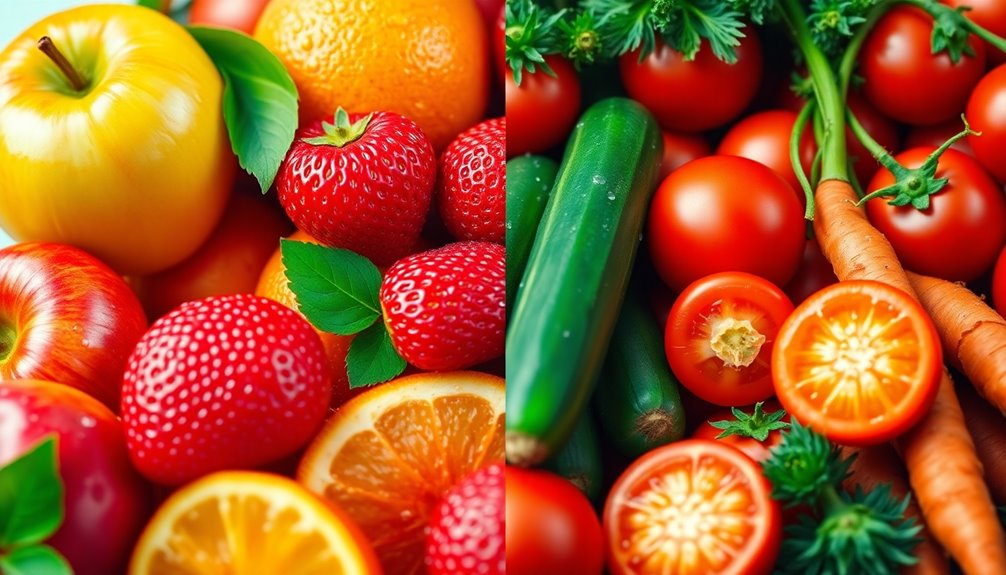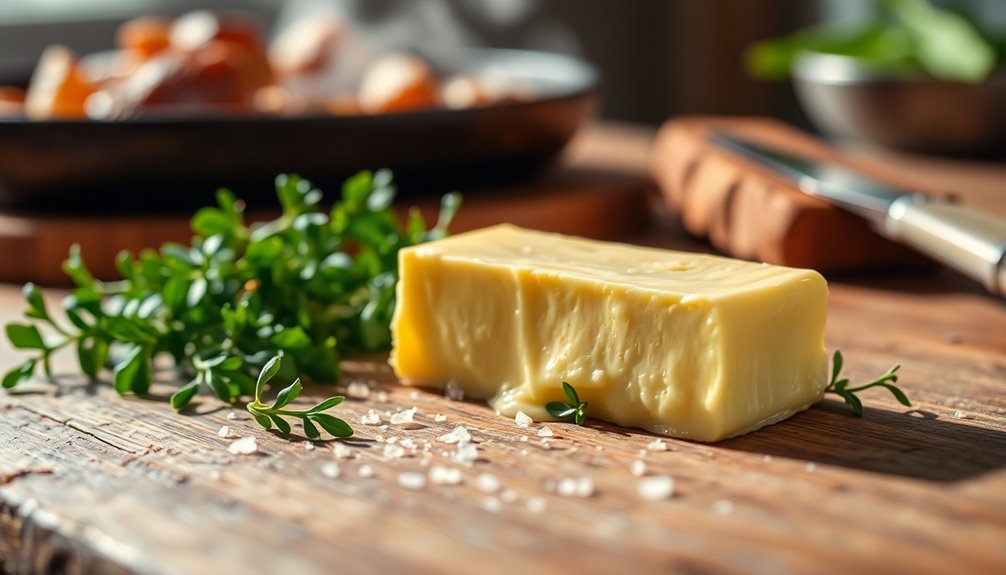Have you ever been cooking and suddenly realized that you’re not sure how many cups 6 tablespoons of butter is equivalent to? No worries! This article will walk you through the conversion process with accuracy and assurance.
By understanding the conversion ratio and employing a simple math equation, you’ll never have to second-guess your butter measurements again.
So, let’s dive in and unravel the mystery behind this common kitchen dilemma.
Key Takeaways
- There are 16 tablespoons in 1 cup.
- Converting 6 tablespoons of butter is equivalent to 3/8 cups.
- Accurate measurements of butter are crucial in baking and cooking.
- Using a kitchen scale or online conversion tools can help ensure accurate butter measurement.
Understanding the Conversion Ratio
To understand the conversion ratio, you need to know that there are 16 tablespoons in 1 cup. When it comes to measuring ingredients in cooking, it’s important to be able to convert between different units of measurement. Whether you’re following a recipe or trying to modify one, understanding cooking conversions is essential.
One common conversion that often comes up is the conversion between tablespoons and cups. By knowing that there are 16 tablespoons in 1 cup, you can easily calculate how many cups are in a given number of tablespoons. For example, if you have 6 tablespoons of butter, you would divide that by 16 to find that it is equivalent to 0.375 cups.
This conversion ratio allows you to accurately measure and incorporate ingredients into your recipes.
Measuring 6 Tbsp of Butter
There’s a simple way to measure 6 tablespoons of butter. All you need is a measuring spoon or a kitchen scale.
Here are three alternatives to butter in recipes that you can use as substitutes:
-
Coconut oil: This versatile oil adds a subtle tropical flavor to your dishes and works well in both sweet and savory recipes. It can be used as a 1:1 replacement for butter.
-
Avocado: Mashed avocado can be used as a healthier alternative to butter in recipes like baking and spreading on toast. It adds a creamy texture and a boost of nutrients.
-
Greek yogurt: If you’re looking for a low-fat option, Greek yogurt can be a great substitute for butter in certain recipes. It adds moisture and tanginess to dishes, making it a great choice for baking and cooking.
When measuring butter substitutes, it’s important to consider their texture and melting point, as they may affect the final outcome of your recipe.
Converting Tbsp to Cups
When you’re converting tablespoons to cups, it’s helpful to know that there are 16 tablespoons in one cup. This conversion is important when measuring ingredients for cooking. Whether you’re following a recipe or adjusting measurements for your own taste, understanding the relationship between tablespoons and cups is essential. To make it easier for you, here’s a handy table that shows the conversion from tablespoons to cups:
| Tablespoons (tbsp) | Cups (c) |
|---|---|
| 1 | 1/16 |
| 2 | 1/8 |
| 3 | 3/16 |
Using this table, you can easily calculate how many cups are in a given number of tablespoons. For instance, if you have 6 tablespoons of butter, you can see that it is equivalent to 3/8 cups. This knowledge will help you accurately measure ingredients and achieve the desired results in your cooking.
Simple Math for Butter Measurement
When it comes to baking or cooking, accurate measurements are crucial, especially when it comes to butter. Understanding conversion ratios for butter can help ensure that your recipes turn out just right.
In this discussion, I will explore the different conversion ratios for butter and provide tips on how to measure butter accurately, so you can confidently create delicious dishes every time.
Conversion Ratios for Butter
To convert tablespoons to cups for butter, you’ll need to know that there are 16 tablespoons in 1 cup. Understanding butter measurements and converting butter ratios can be helpful when following recipes or adjusting quantities. Here are three important things to keep in mind:
-
Precision: Converting butter ratios requires accuracy. Using the correct measurements ensures the desired outcome of your recipe. It’s important to follow the conversion ratios precisely to maintain the intended taste and texture.
-
Consistency: Consistency is key in baking and cooking. Understanding butter measurements allows you to maintain consistency in your dishes. Converting ratios ensures that you use the same amount of butter every time, resulting in consistent flavors and textures.
-
Flexibility: Converting butter ratios also gives you the flexibility to adjust recipes to your liking. Whether you want to reduce the fat content or increase the richness, understanding the conversions allows you to make these modifications without compromising the final result.
Measuring Butter Accurately
Understanding how to accurately measure butter is essential for achieving the desired taste and texture in your recipes. Whether you’re a seasoned chef or a novice in the kitchen, getting the measurements right can make all the difference. To help you navigate the world of butter measurements, here is a handy table that shows the conversions for common measurements:
| Butter Measurement | Equivalent in Cups |
|---|---|
| 1 tablespoon | 1/16 cup |
| 2 tablespoons | 1/8 cup |
| 4 tablespoons | 1/4 cup |
Tips for Accurate Butter Conversion
If you’re unsure about accurate butter conversion, remember to use 3/8 of a cup for 6 tablespoons.
When it comes to measuring butter, precision is key. Here are three tips for converting butter quantities accurately:
-
Use a kitchen scale: Weighing the butter can give you the most accurate measurement. This is especially important when baking, where precise measurements can make a big difference in the outcome of your recipe.
-
Pay attention to the markings on the butter wrapper: Most butter packages have markings indicating tablespoon measurements. This can be a helpful guide when you need to measure out a specific amount.
-
Use an online conversion tool: If you don’t have a kitchen scale or the butter packaging doesn’t have markings, there are plenty of online conversion tools available that can help you convert tablespoons to cups or grams.
Adjusting Recipes for Different Butter Quantities
Now that we’ve discussed how to accurately convert butter measurements, let’s move on to adjusting ingredient ratios when using different quantities of butter.
It’s important to keep in mind that butter not only adds flavor but also affects the texture and structure of baked goods. So, if you’re adjusting the amount of butter in a recipe, it’s crucial to make the necessary changes to maintain the desired outcome.
When reducing the amount of butter, you may need to increase other wet ingredients, such as milk or oil, to ensure the right moisture content. On the other hand, when increasing the butter, you might need to adjust dry ingredients, like flour or sugar, to maintain the proper balance.
Common Mistakes to Avoid in Butter Measurement
One of the most common mistakes to avoid when measuring butter is using the wrong unit of measurement. It’s crucial to understand the correct techniques for measuring butter to ensure accurate results in your recipes.
Here are three common butter measurement errors to be mindful of:
-
Using tablespoons instead of grams: Many recipes call for butter to be measured in grams, but some people mistakenly measure it in tablespoons. This can lead to incorrect proportions and affect the texture and taste of your dish.
-
Not softening the butter properly: Softened butter is easier to measure accurately. If you try to measure cold or melted butter, you may end up with inconsistent measurements, affecting the outcome of your recipe.
-
Eyeballing the measurement: Guessing the amount of butter can lead to imprecise results. It’s always best to use a kitchen scale or measuring spoons to ensure accuracy.
Frequently Asked Questions
Can I Use a Different Type of Fat, Like Margarine or Oil, Instead of Butter in a Recipe?
Yes, you can use margarine or oil as a substitute for butter in a recipe. However, keep in mind that margarine alternatives may have a different taste and texture. Additionally, using oil instead of butter can have health benefits, as it is lower in saturated fat.
How Can I Measure Butter if I Don’t Have a Tablespoon?
To measure butter without a tablespoon, there are alternative ways you can try. One option is to use a kitchen scale to weigh the butter. Another option is to use a measuring cup with markings for tablespoons.
Is It Possible to Convert Tablespoons to Grams or Ounces?
Converting tablespoons to milliliters is possible. Although a scale is not typically used for measuring butter, it can provide accurate results. However, to determine how many cups 6 tbsp of butter is, a different conversion method is needed.
How Can I Adjust a Recipe if I Want to Use Less or More Butter Than the Original Amount?
When adjusting a recipe, it’s helpful to know how to substitute or modify the amount of butter. There are alternative fats like oil or margarine that can be used, but it’s important to understand their differences in texture and flavor.
Are There Any Substitutes for Butter if I Want to Make a Recipe Dairy-Free?
When making dairy-free recipes, there are several substitutes for butter. Some options include coconut oil, avocado, or nut butter. It’s important to note that these alternatives may affect the texture and taste of the final product.
Conclusion
In conclusion, understanding how to convert tablespoons of butter to cups is essential for accurate measurements in cooking and baking.
It is important to note that 6 tablespoons of butter is equivalent to 0.375 cups.
This means that if a recipe calls for 6 tablespoons of butter and you prefer to measure in cups, you would need approximately 3/8 cup of butter.
This conversion can be helpful when adjusting recipes or when using measuring cups instead of tablespoons.
Remember, precision in butter measurement can greatly affect the outcome of your dish.
